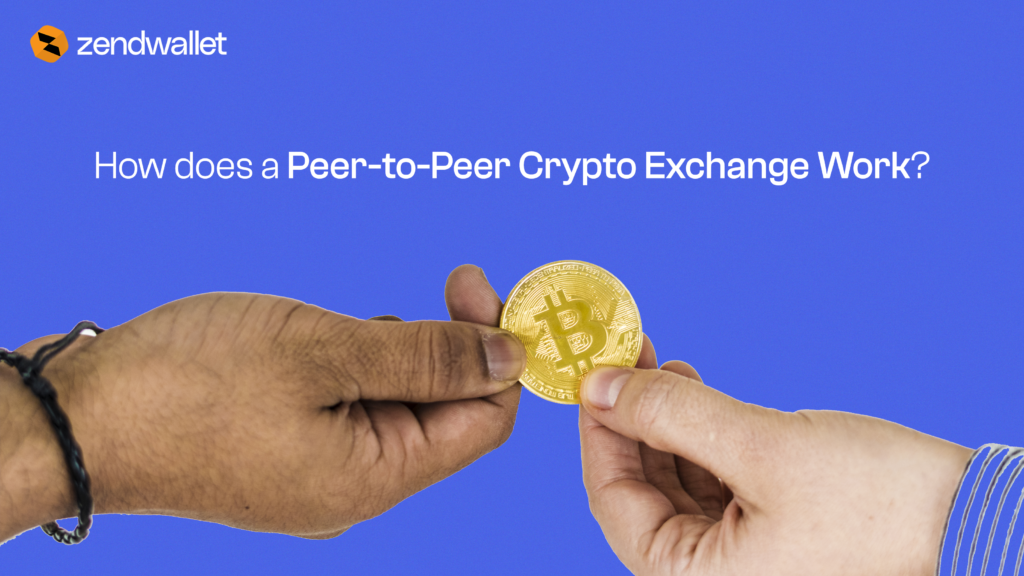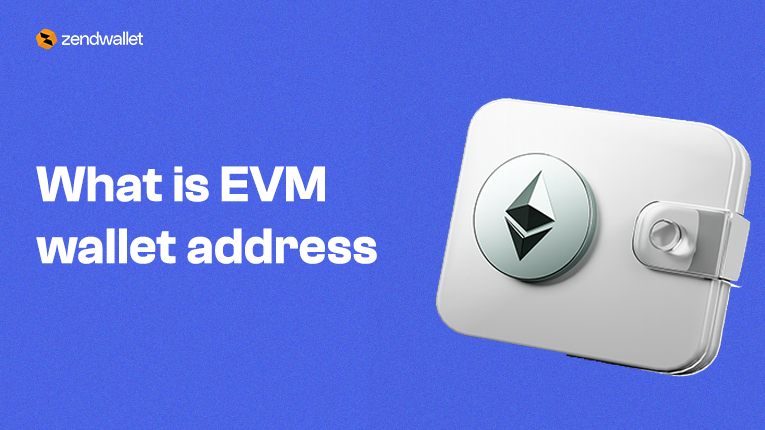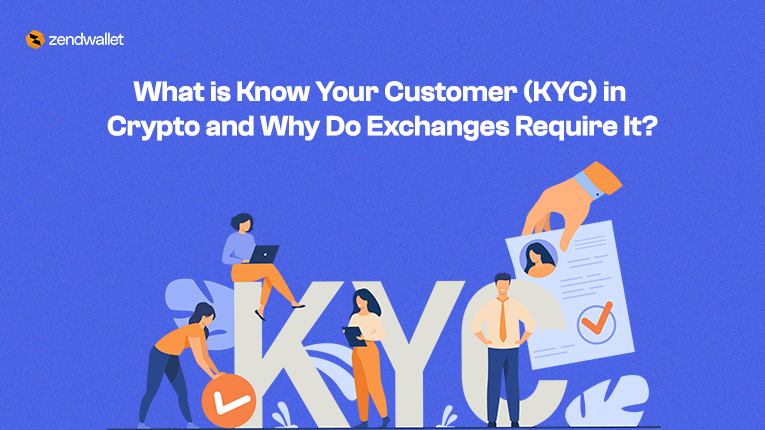Cryptocurrency has become one of the most valuable digital assets in the modern virtual economy.
From its humble beginnings, it has faced numerous hurdles to reach its prominent position.
The rise of cryptocurrency has redefined our understanding of money and changed the way we trade it.
Traditionally, centralized exchanges have dominated the crypto trading market and ecosystem.
However, a more decentralized approach is steadily gaining traction: Peer-to-Peer (P2P) cryptocurrency exchanges.
Since Bitcoin’s launch in 2009, the crypto market has expanded, with thousands of digital assets now circulating.
According to CoinMarketCap, there are over 9,000 cryptocurrencies, with a combined market value exceeding $2 trillion.
As the need for safer, more reliable trading platforms increases, P2P crypto exchanges have gained popularity due to their decentralized nature and the direct user-to-user trading experience they offer.
But what exactly is a P2P crypto exchange, and how does it work? Let’s take a closer look.
What is a Peer-to-Peer (P2P) Crypto Exchange?

A Peer-to-Peer (P2P) cryptocurrency exchange allows users to trade digital currencies directly with one another, bypassing traditional intermediaries such as centralized exchanges and banks.
By using blockchain technology, P2P platforms create decentralized trading environments where buyers and sellers can conduct transactions securely and smoothly, often with fewer restrictions.
While centralized exchanges (CEX) have been the primary method for trading crypto for years, the P2P model has become a strong alternative.
This approach is particularly attractive in countries with regulatory challenges, as it allows users to trade without depending on government approval or financial institutions.
In countries like India, where cryptocurrency regulations can be strict, P2P exchanges have seen significant growth. They also appeal to users seeking more privacy, flexibility, and a broader range of payment options.
How Does a Peer-to-Peer (P2P) Crypto Exchange Work?

At its core, P2P exchanges are designed to connect buyers and sellers without the need for an intermediary.
Users create buy or sell orders, and the platform matches the right buyers with the right sellers based on price and location.
Here’s a step-by-step breakdown of how a Peer-to-Peer (P2P) crypto exchange works:
Creating Orders: A user looking to buy or sell a cryptocurrency places an order, specifying the amount they wish to trade and the price at which they’re willing to do so.
This information is made visible on the exchange’s platform.
Matching Buyers and Sellers: The P2P platform then matches buyers with sellers whose orders match the specified criteria, such as the amount of crypto they wish to exchange and the agreed-upon price.
Escrow Service: To ensure the transaction is secure, most P2P exchanges use an escrow system.
Once a buyer and seller agree on the terms, the cryptocurrency is held in escrow until both parties have completed their obligations.
Transaction Completion: The buyer transfers the agreed-upon payment (via a payment method like Paytm, UPI, or bank transfer) to the seller.
Once the seller confirms receipt of the payment, the cryptocurrency is released from escrow to the buyer’s wallet.
Ratings and Feedback: Once the transaction is completed, both parties can rate each other, adding a layer of transparency and trustworthiness to the platform.
This feedback mechanism helps protect users from fraud and promotes honest trading behavior.
How Does a Peer-to-Peer (P2P) Crypto Exchange Work?
At its core, P2P exchanges are designed to connect buyers and sellers without the need for an intermediary.
Users create buy or sell orders, and the platform matches the right buyers with the right sellers based on price and location.
Here’s a step-by-step breakdown of how a Peer-to-Peer (P2P) crypto exchange works:
Creating Orders: A user looking to buy or sell a cryptocurrency places an order, specifying the amount they wish to trade and the price at which they’re willing to do so.
This information is made visible on the exchange’s platform.
Matching Buyers and Sellers: The P2P platform then matches buyers with sellers whose orders match the specified criteria, such as the amount of crypto they wish to exchange and the agreed-upon price.
Escrow Service: To ensure the transaction is secure, most P2P exchanges use an escrow system.
Once a buyer and seller agree on the terms, the cryptocurrency is held in escrow until both parties have completed their obligations.
Transaction Completion: The buyer transfers the agreed-upon payment (via a payment method like Paytm, UPI, or bank transfer) to the seller.
Once the seller confirms receipt of the payment, the cryptocurrency is released from escrow to the buyer’s wallet.
Ratings and Feedback: Once the transaction is completed, both parties can rate each other, adding a layer of transparency and trustworthiness to the platform.
This feedback mechanism helps protect users from fraud and promotes honest trading behavior.
Advantages of Peer-to-Peer (P2P) Crypto Exchanges

P2P crypto exchanges provide several benefits that have made them increasingly popular among crypto traders. Here are the key advantages:
1. No Middleman
P2P platforms eliminate the need for intermediaries, such as banks or centralized exchanges, to facilitate trades.
This results in faster and cheaper transactions. By cutting out the middleman, users maintain full control over their assets and trades.
2. Enhanced Privacy
Unlike centralized exchanges that often require extensive personal information and ID verification, P2P platforms generally allow for more privacy.
While users may still need to verify their identity for security purposes, the platform itself does not hold as much sensitive information, reducing the risk of data breaches.
3. More Payment Options
P2P exchanges are popular for offering a wide variety of payment methods.
Users can choose from a range of options such as bank transfers, digital wallets (e.g., Paytm, Google Pay), and even cash in some cases, depending on the platform.
This flexibility is particularly beneficial in regions where traditional banking options are limited or where users prefer to use alternative methods for transactions.
4. Lower Fees
Since P2P exchanges do not have the overhead costs of centralized platforms, they tend to charge lower transaction fees.
In many cases, there may be no fees at all, or fees may be split between the buyer and seller, depending on the platform.
5. Decentralized Trading
Unlike centralized exchanges that operate under a single authority, P2P exchanges are decentralized, meaning that trades are executed directly between users.
This setup minimizes the risk of hacks, fraud, and other issues related to centralized control.
Key Factors that Make Peer-to-Peer (P2P) Crypto Exchanges Stand Out
While many exchanges are available in the crypto world, P2P exchanges stand out for their efficiency. Here are the factors that make them attractive:
1. No Transaction Fees
P2P platforms typically do not charge the same transaction fees that centralized exchanges do. This is because there are no intermediaries involved in processing payments.
2. Flexible Pricing
The price at which users buy and sell cryptocurrency is determined by the individuals themselves. This enables greater flexibility and room for negotiation compared to fixed pricing found on centralized exchanges
3. Improved Security
Since users maintain control of their assets and the exchange uses an escrow system, the risk of fraud is significantly reduced.
Escrow services hold cryptocurrency until both parties have fulfilled their transaction obligations, preventing issues like chargebacks or non-payment.
4. Transparency
Most P2P exchanges allow users to view ratings and feedback for other traders, adding a layer of accountability.
This helps ensure that only reliable and trustworthy traders participate on the platform, enhancing the overall security and experience.
How Peer-to-Peer (P2P) Trading Platforms Operate
P2P exchanges work in a decentralized manner, meaning they don’t rely on a central authority to manage transactions. Here’s a deeper look at the operating structure:
Matching System: P2P platforms serve as a “matchmaker” between buyers and sellers. Similar to classified ads or listings, users post their trade offers and browse others’ listings.
The platform’s role is to connect compatible buyers and sellers based on factors like price, location, and payment method.
Escrow and Payment Verification: A key feature of P2P exchanges is their use of escrow accounts. When a transaction is initiated, the cryptocurrency being traded is locked in escrow.
This ensures that the seller cannot walk away with the buyer’s payment and vice versa. Only once the payment has been confirmed is the cryptocurrency released to the buyer’s wallet.
Security and Trust: Since users have the option to rate each other, P2P exchanges are designed to foster trust among traders.
Platforms often display trader ratings, transaction history, and feedback to help users make informed decisions before engaging in a trade.
Types of Peer-to-Peer (P2P) Networks
Different types of P2P networks exist, and each operates with unique characteristics. In the context of P2P cryptocurrency exchanges, these include:
1. Structured Networks
A structured P2P network uses indexing methods like distributed hash tables (DHT) to organize nodes.
This makes it easier for participants to locate specific data without wasting resources. An example of a structured network in crypto would be BitTorrent.
2. Unstructured Networks
In an unstructured P2P network, nodes (or participants) are linked without an organized structure.
These networks are often simple to create but inefficient in data retrieval since the system has to search through all nodes to find specific information.
3. Hybrid Networks
Hybrid networks combine elements of both structured and unstructured models.
These networks use central indexing servers alongside peer-to-peer methods to achieve a balance between organization and flexibility.
They are ideal for large-scale applications.
Key Features of a Reliable Peer-to-Peer (P2P) Crypto Platform
When choosing a P2P platform, several features make a platform reliable and effective:
1. Automated KYC/AML Processes
For regulatory compliance and security, many P2P exchanges now integrate automated Know Your Customer (KYC) and Anti-Money Laundering (AML) processes.
These processes ensure that users are properly verified and that fraudulent activities are minimized.
2. User-Friendly Interface
The platform should offer an intuitive interface that allows users to navigate effortlessly, place orders, and execute trades quickly.
3. Dedicated Customer Support
Responsive customer support is essential for troubleshooting and ensuring that users can get assistance when needed. Many platforms offer 24/7 support to help resolve issues quickly.
4. Advanced Security Features
Security is paramount in cryptocurrency trading. The platform should use encryption protocols such as SSL, two-factor authentication (2FA), and anti-Denial of Service (DoS) protections to secure user accounts and transactions.
5. Escrow System
A smart contract-driven escrow system is one of the most crucial features of a P2P exchange.
This system ensures that funds are not released until both parties have fulfilled their part of the trade, making transactions safer for both buyers and sellers.
Conclusion
Peer-to-Peer (P2P)crypto exchanges provide an efficient, secure, and flexible way for users to trade cryptocurrencies directly with each other.
By eliminating intermediaries, offering more payment options, and maintaining high levels of privacy, P2P platforms have become increasingly popular among crypto traders.
Peer-to-Peer (P2P)exchanges offer a reliable way to engage in crypto trading without the restrictions often found on centralized exchanges.
For anyone looking to enter the cryptocurrency trading market, P2P exchanges are worth considering, offering better rates, increased control, and enhanced security
Also Read: ZendWallet: Africa’s Top Choice for Cryptocurrency Exchange



